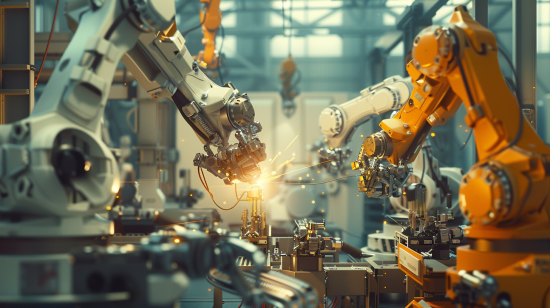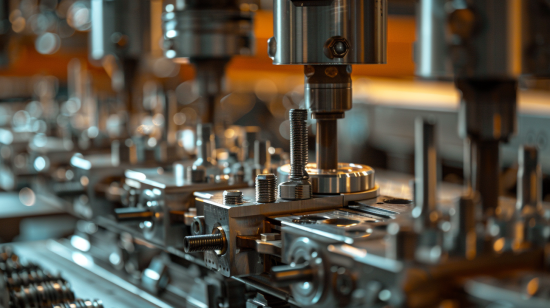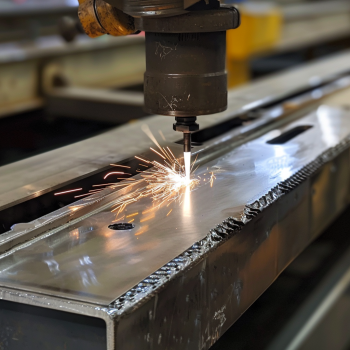Welding or Riveting? Why Choosing the Right Method Can Make or Break Your Project
If you’ve ever found yourself struggling with warped sheet metal, loose rivets, or ugly weld marks, you’re not alone. Picking between welding and riveting can be tricky, and it’s critical to get it right. After all, choosing the wrong method can lead to costly repairs, delays, or worse—complete project failure.
Welding is generally better for strength and durability in high-stress applications, while riveting shines when modularity and ease of assembly are key. Both methods excel, depending on your project’s needs, materials, and future maintenance plans.
Curious which one is right for your next project? Let’s break down the pros and cons of welding and riveting, so you can make an informed decision. Your project—and budget—will thank you.

1. What is Welding? A Quick Breakdown
Welding is the ultimate metal marriage ceremony—it fuses two pieces of metal into one using heat and pressure. Whether you’re welding thin aluminum or thick stainless steel, welding is a go-to method in the sheet metal world. There are many types of welding, but the most common in our industry are MIG (Metal Inert Gas) and TIG (Tungsten Inert Gas) welding.
MIG welding is popular because it’s fast and efficient, making it perfect for thicker materials and larger projects. TIG welding, on the other hand, is the slow, steady process that provides precision and cleaner finishes—perfect for smaller, more intricate work.
If you need a bond that can take a beating, welding is the way to go. But like most marriages, it has its quirks and challenges.
2. Riveting: The Mechanical Maestro
If welding is a metal marriage, riveting is like metal Lego building—effective, solid, but not permanent. Riveting is the process of joining two pieces of metal together using a mechanical fastener. This method doesn’t involve heat, making it a great option for delicate, heat-sensitive applications.
There are many types of rivets used in sheet metal fabrication: solid rivets, pop rivets, and blind rivets, to name a few. Riveting is especially useful when you need a joint that can be easily disassembled later or when you’re working with different materials. It’s often found in industries that require frequent maintenance, like aerospace or electronics.

3. Strength Comparison: Which Method Has More Muscle?
Welding is typically stronger. It creates a continuous bond between two pieces of metal, making it ideal for heavy-duty, load-bearing applications. This is why welding is the preferred method in industries like automotive, aerospace, and industrial equipment, where parts often experience significant stress.
Riveting is strong, but because it uses a mechanical fastener instead of a melted bond, it doesn’t have the same load-bearing capacity. It’s great for lightweight structures but may not be able to handle the same level of stress as a welded joint.
4. Durability and Long-Term Performance
Welds tend to be more durable in high-stress environments. They hold up under pressure, vibration, and the elements. However, if a weld does fail, it can be catastrophic—think cracking, warping, or part failure. That said, proper finishing and regular maintenance can help mitigate these issues.
Rivets may work loose over time, especially in applications with a lot of vibration or thermal expansion. For example, in industries like aerospace, where both vibration and temperature change are common, riveting may require more maintenance to ensure the joint remains intact.

5. Which Is Easier to Assemble?
Let’s be honest—welding isn’t for the faint of heart. It requires special equipment, skilled labor, and a lot of safety precautions. The plus side? When you weld something, it’s there for life. But the process itself? Slow and complicated.
Riveting, on the other hand, is pretty simple. Need to take it apart and put it back together later? No problem—you just pop the rivets out and replace them. This makes riveting a great choice for industries where you need to put things together and take them apart quickly, like manufacturing and aerospace.
6. Cost Considerations: Welding vs. Riveting
It all comes down to money. When you think about cost, welding is typically more expensive up front. That’s because of the labor, the special equipment, and the safety measures you need to take when you’re dealing with the extreme heat of welding. For smaller, high-precision jobs, TIG welding might be your choice despite the cost. But if you’re running big batches and need speed, MIG welding is usually the cheaper option.
Riveting, on the other hand, usually wins the cost battle. It’s not labor-intensive, you don’t need big equipment, and the materials are usually less expensive. If you’re doing a lot of something, riveting can be the less expensive way to go.

7. Flexibility in Design: Modular or Permanent?
Welding is great when you need a seamless, complex design. It can join metal in intricate shapes and patterns that would be impossible with rivets. If you need a design with clean lines and no breaks, welding is the way to go.
But what if your design needs to change over time? Riveting is modular—if you need to change out a piece or change the configuration, you can take it apart without too much trouble. This makes riveting a great choice for projects where you need to adapt, like electronics or lightweight enclosures.
8. How Does Heat Affect Your Project?
Heat isn’t just a factor in welding—it’s a potential headache. Welding introduces a lot of heat into your material, which can cause warping, especially in thin sheet metal. This is a big problem in industries that require precision, like electronics, where even the slightest distortion can throw off the design.
Riveting eliminates the heat factor, making it a safer option for heat-sensitive materials. If you want to avoid that nasty metal warp, riveting can save you a lot of headaches and rework.

9. Corrosion Resistance: Protecting the Metal
Here’s something you might not have considered: welding can actually make your metal more susceptible to corrosion. The heat-affected zone (HAZ) can compromise the protective layers on certain metals, leading to rust if you don’t treat or coat it after welding. That’s why post-weld finishing like powder coating or anodizing is often essential.
Riveting, while not immune to corrosion issues, usually poses fewer problems in this area—unless you’re using dissimilar metals, which can lead to galvanic corrosion. In those cases, a protective coating or proper material selection can help prevent undesirable corrosion.
10. Repair and Maintenance: Easy Fix or Pain in the Neck?
Welds are incredibly strong, but when they break, they’re not the simplest things to fix. Repairing a bad weld often means cutting it out and welding it back in, which can be expensive and time-consuming, not to mention it might make the part weaker.
Rivets, on the other hand, are much easier to replace. If you have a damaged or loose rivet, you can drill it out and replace it with a new one, which is a lot simpler and cheaper than re-welding. This makes rivets a better choice for structures that need frequent maintenance or upgrades.

11. Aesthetic Considerations: Clean Finish or Industrial Look?
When it comes to appearance, welding—especially TIG welding—can give you a clean, seamless look that’s hard to beat. There’s no mechanical fastener sticking out, and with a skilled welder, the joint can be nearly invisible.
Riveting, while functional, isn’t as clean. You’ll see the rivet heads, which can detract from the look of your design. However, in some applications, the industrial look of rivets might actually enhance the design—think airplanes or vintage machinery.
12. Environmental and Safety Considerations: Which Is Friendlier?
Welding has more environmental and safety hazards. The fumes created during welding can be dangerous, so you need proper ventilation and protective gear. Plus, there’s the added danger of burns and eye injuries if you don’t take the right precautions.
Riveting, on the other hand, is generally safer and more environmentally friendly. There are fewer harmful fumes, and because you’re not using heat, there’s less risk of burns or damaging equipment. In a world where sustainability and worker safety are increasingly important, riveting can be a better choice for environmentally conscious projects.
Conclusion: What’s Your Verdict?
So, what’s the answer? It depends on what you’re trying to do. If you need the strongest, most durable, best-looking connection, welding is your best bet. But if you need something that’s easy to put together, easy to take apart, and won’t break the bank, riveting is the way to go. Pick the one that works best for your project, and you’re well on your way to making it happen.

